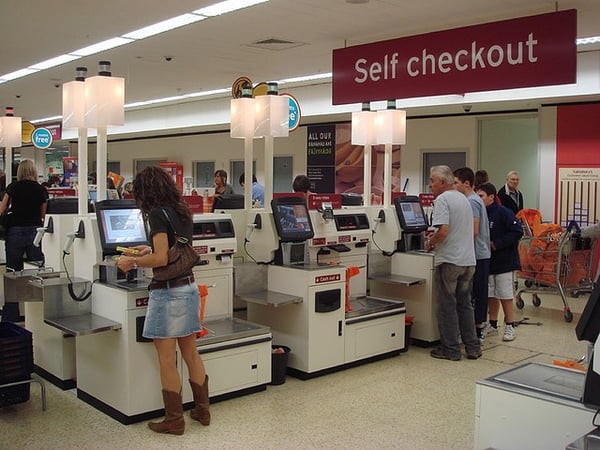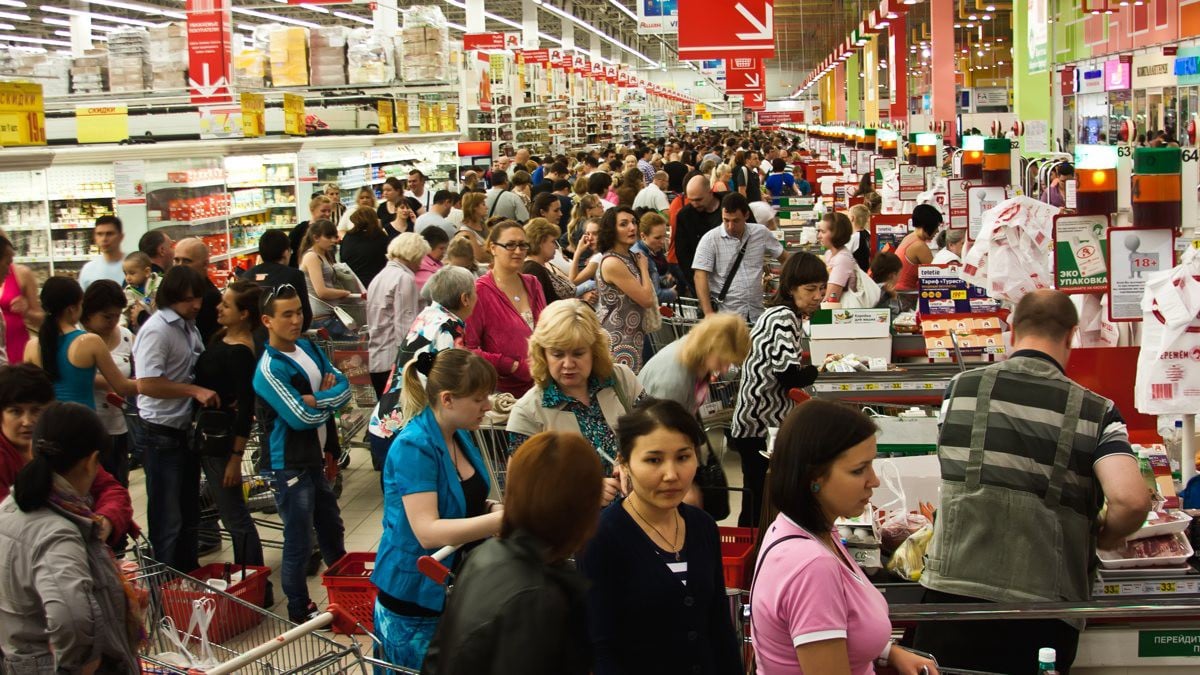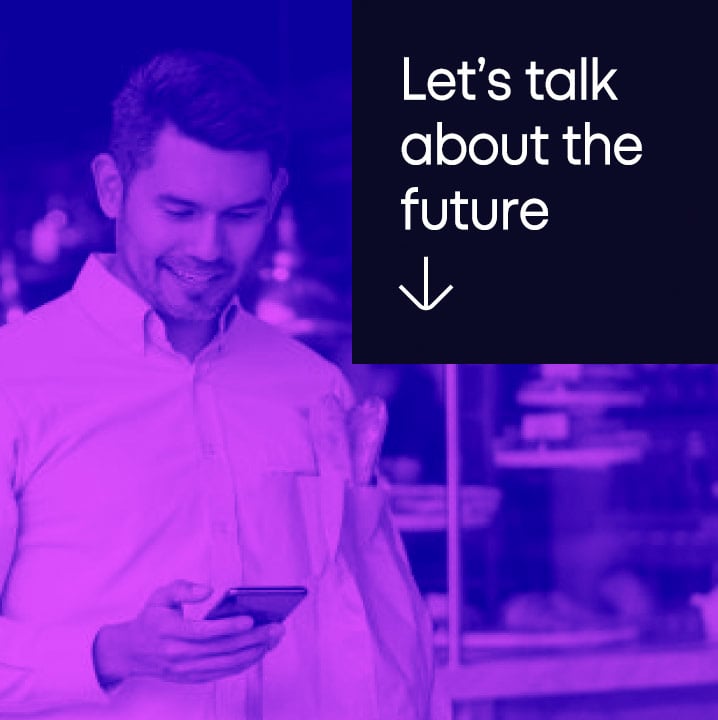Growing up in India in the 80s, one of the vivid memories I have is of accompanying my mother to the neighborhood grocery store. It was a small store, probably 500 sq ft, but had almost everything one needed, including loose kerosene in a big drum, which gave the store a distinctive smell. My mother would pick all the fresh vegetables, cereals and other household items, put them all in a basket, hand it over to the shopkeeper, and just walk out! No need to wait in any line.
The secret behind this magical checkout experience was a (not so cheap) backend process. The shopkeeper knew our family, and other regular customers, so he’d set our basket aside with a name tag. Then later, when one of his assistants had some free cycles, he’d bag all the items and mark them for delivery. The store had a vehicle with a driver that delivered these orders and collected the money. The shopping experience was great for us as customers. So why doesn’t every modern grocery store run on this model?
The reason is it’s an inefficient model. Customers were funding the backend operations of the store with higher prices in order to save the wait time, and not have to lug the merchandise home themselves. In the 90s, when cars started to become more common place in India, the mental math changed. Bringing home the merchandise oneself was fairly convenient and quite a bit cheaper than having the store deliver it. So people got lower prices in return for waiting their turn to checkout and take their stuff home.
As stores got bigger, the longer the checkout lines grew. For instance, the average wait time can be as high as 8 minutes at a supermarket in Washington DC! That is average, not peak. Obviously, customers don’t like it. More importantly, they hate it! Despite the fact that it’s a small portion of the average 43 minute shopping time, the 8 minute wait feels like eternity. That’s because we perceive times differently when we are actively engaged in something vs when we are not. There are many tricks the stores try to shift that perception by filling the checkout aisles with magazines and sugary snacks, but they don’t always work.
The long checkout wait times not only hurt customer satisfaction but they also hurt store sales. One could argue that the average shopping time is as long as it is (even not accounting for the time spent at checkout), because most customers would not step in to a grocery store or supermarket unless they have enough number of items to buy, in order to justify the long wait at checkout. While long shopping times correlate with more dollars spent, what’s really happening is that the customers are doing their shorter shopping sessions elsewhere, like a convenience store, often times paying a premium for the convenience. Most stores should strive to earn a larger share of their customers’ monthly spending, not just on a per-visit basis. And they can, if they addressed the checkout problem.
Before we look at ways to fixing the checkout problem, it’s helpful to define a couple of terms — latency and throughput. Latency is the time it takes to checkout a customer, i.e. time between when they entered the checkout line, and the time they left with their bags. Throughput is the total number of checkouts per given time unit, say an hour. The checkout wait time (avg 8 mins) we’ve discussed above is the latency of checkout. So our aim is to reduce the latency.
One way a store can reduce latency, as we all know, is by having more checkout counters and more cashiers. In fact, if we took this to the extreme and the store could make sure that they have as many cashiers in the store as customers wanting to checkout at any given time, then the latency would be nearly zero. No customer would have to wait, except for the time it takes to scan their products.
Unfortunately, it’s not economically feasible because stores would have to hire a lot more cashiers and dedicate more of their real estate to checkout counters to handle peak traffic. On your last grocery store trip, how many people were ahead of you when you entered the line? If you said 3, then the store needs to have 3x more counters open to achieve the goal of no wait. If you said 10, then it’s 10x! That’s a big increase in cost. Certainly, more people would shop more often at those stores, now that there is no wait, but the additional sales are not enough to compensate for the dramatic increase in costs. In other words, it’s throughput per cashier (let’s call it productivity) that impacts the profitability of the store. The above approach of having as many cashiers as peak checkout traffic eliminates latency and brings in more sales but makes the store productivity far worse. This tension between latency and productivity is why we have the checkout problem.

The first attempt at solving the checkout problem was the self-checkout kiosk. By having customers check themselves out, stores can keep their number of cashiers constant while lowering wait times. On the face of it, this should have been enough to solve the problem fully. Just have as many self-checkout counters as customers at peak traffic, and no customer would ever have to wait. But while self-checkout counters have been steadily growing in number, they are still limited to a small section of the checkout space and (generally) only handle small percentage of the overall volume.
There are multiple reasons:
- The user experience is clunky. On the average, self-checkout is slower than a cashier (if you can get in front of that cashier right away).
- There is a limit to how much additional work customers are willing to do. Current self-checkout systems clearly cross that limit when the customer has more than a handful of items to checkout.
- And self-checkout can lead to more losses from theft. In fact, the theft numbers are probably lower than they could be if it weren’t for the deterrents that stores use, like a dedicated attendant near the kiosks.
Because of these issues, self-checkout is, at best, a partial solution to the checkout problem.
There are numerous solutions on the market and in development, trying to make the self-checkout model more efficient by putting a scanner or camera on each cart (instead of the fixed kiosk), or providing a smartphone app with self-checkout capabilities. While this approach increases the overall self-checkout capacity (every shopper gets their own personal mini-kiosk), it makes things worse on the loss front (theft or under-billing). In case of a self-checkout kiosk, a single attendant can “keep an eye” on multiple kiosks. But if customers are expected to scan items and put them in their carts through out the store, it’s harder to keep an eye on things. The store would have to resort to some sort of rigorous receipt-checking at exit (not the cursory Costco style one), which will introduce a new bottleneck and add to customer wait times.
Automated checkout systems like these, these and the one we are building will completely eliminate the need to checkout, resulting in zero latency and practically unlimited throughput. Zero latency means no wait whatsoever. In case of self-checkout, if a kiosk is readily available, the customer still needs to scan each item individually, which takes time. So the latency may be low, but technically never zero.
Unlimited throughput means that without the checkout bottleneck, the number of customers who can shop and leave the store per hour has no limit. Of course, the number of customers who can enter the store (and hence shop simultaneously) is still limited by the total amount of space in the store and fire code regulations, but the checkout throughput has no limits. There are no counters, kiosks or receipt checkers.
Magical things start to happen when you reach zero latency and unlimited throughput. Customers will be delighted. They will not only save precious time, but also feel better when they are not frustrated waiting to checkout. Stores will become more profitable. They will be able to use their freed up workers to provide better customer service, re-stock their shelves more regularly, and improve the overall store experience.
As for my mother, she couldn’t be more thrilled to learn that soon she’ll:
- Be able to hand-pick the highest quality produce like she prefers to do
- Won’t have to wait at checkout, just like the good old days, but without the higher prices
- Still have the instant gratification of bringing the groceries home
Originally published on medium.com on January 16, 2018.





